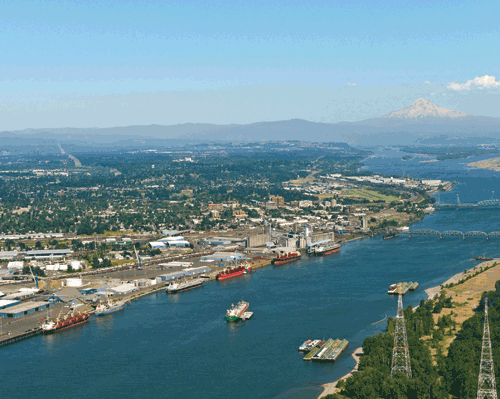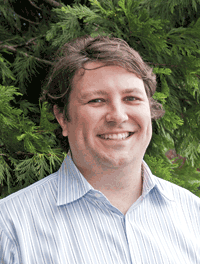
 Howsley said that he is aware of several amicus (impartial advisor of the court) briefs that will be filed prior to the hearing, supporting the county/BIA position.
Howsley said that he is aware of several amicus (impartial advisor of the court) briefs that will be filed prior to the hearing, supporting the county/BIA position.
“There is interest [in the suit] at the state level,” said Howsley.
July is also the month when the Washington Department of Ecology (DOE) is supposed to issue new Phase I MS4 permits, after processing comments received during a public comment period that closed in February. The new permits will be based on a previous ruling from the PCHB that requires the DOE to mandate that permittees implement low-impact development (LID) techniques for stormwater management.
The basic idea behind LID is to minimize impervious surfaces, such as parking lots, roofs, sidewalks, and streets, while using bioretention facilities, rain gardens, vegetated rooftops, cisterns, permeable pavements, soil amendments and tree box filters to limit runoff and maximize infiltration.
Dvija Michael Bertish, a representative of the Rosemere Neighborhood Association, said “The [state’s] standard is best met by infiltrating stormwater into the ground rather than sending it rushing into streams via open pipes. LID techniques are state-of-the-art technologies that are the most successful ways to achieve stormwater infiltration.”
The problem, according to Eric Golemo, owner of SGA Engineering PLLC, arises when LID techniques are mandated, without concern for the specific needs and constraints of a development site. Golemo said that certain LID techniques aren’t as useful in the Pacific Northwest, which has distinct wet and dry seasons, as they are in other parts of the country.
For example, cisterns aren’t very useful in our climate, because they fill up too fast in the rainy season and are not emptied until summer. LID techniques that utilize infiltration and storage in the upper soil can be effective in the right soils, but can significantly increase development costs with minimal environmental benefit if used in the wrong soils.
“We’ve used bioretention every time it is feasible,” said Golemo.
But there are situations, according to Benjamin Benninghoff, municipal storm water coordinator for the Oregon Department of Environmental Quality (DEQ), which encourages but does not mandate LID, where infiltration is not a good choice. For example, if the soil is heavy clay on a slope, infiltration could lead to increased likelihood of landslides.
“Runoff is a site-by-site issue,” he said. “We have to use science, good engineering principles, and an understanding of slope and soils. There are so many variables.”
Golemo said that infiltration works best in gravelly or sandy soils, such as those found in east Clark County. However, most of these sites have already been developed. In other areas, such as Camas & Washougal, Ridgefield and Battle Ground, the soils are mostly clay-based, heavy silt and bedrock.
In areas where infiltration isn’t possible, developers are required to build larger stormwater “jails” to manage runoff and flow rates. To meet the current state default stormwater management requirements, said Golemo, these retention facilities can take up 25 to 30 percent of a typical development site.
“The literature says LID techniques are cost effective,” said Howsley. “The problem is that they don’t always work in Clark County. So we end up doing LID as well as stormwater jails.”
This, explained Howsley, drives up development costs.
“As we recover from the recession, every dollar counts,”
he said, a fact that Golemo said doesn’t cut much ice with the DOE.
“The Department of Ecology’s definition of ‘feasibility’ doesn’t include cost and long-term maintenance,” said Golemo.
Golemo added that the environmental groups don’t completely understand engineering concepts and how everything works. For example, he said, if stormwater infrastructure takes up more of the site, it means less land for job growth, and also pushes development into rural areas, eroding green areas we want to protect and making people drive farther for work.
“The environmental groups don’t see the unintended side effects,” he said.
The bottom line, said Golemo, is that the feasibility of LID techniques on a specific site should be left to the professionals.
“If it is the best tool, it will be used,” said Golemo.
The DOE appears to agree, at least to a certain extent. In a February InvestigateWest article, Bill Moore, storm water lead for the Washington State DOE, was quoted as saying, “The last thing we want is to require LID and find out it’s not working – it’s flooding the neighbor’s basement or something else that defeats its purpose.”
According to Golemo, blindly mandating LID at the state level will result in LID techniques being used inappropriately, as well as stymying development.
“If it doesn’t balance economic and environmental impacts, no proposal is sustainable,” he said.



